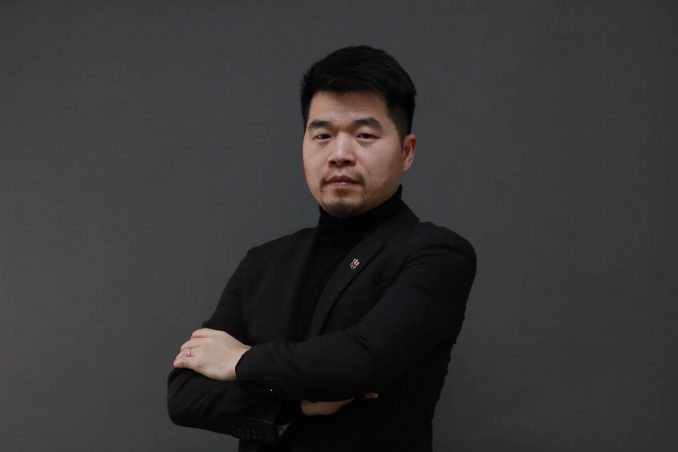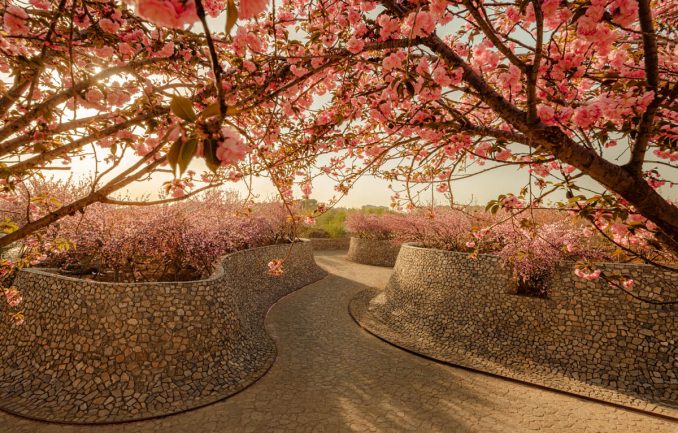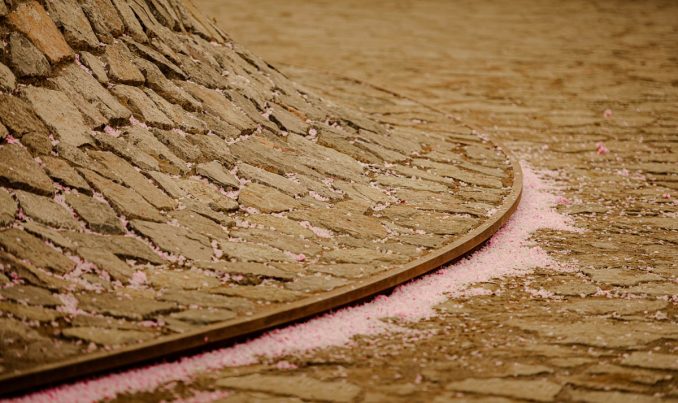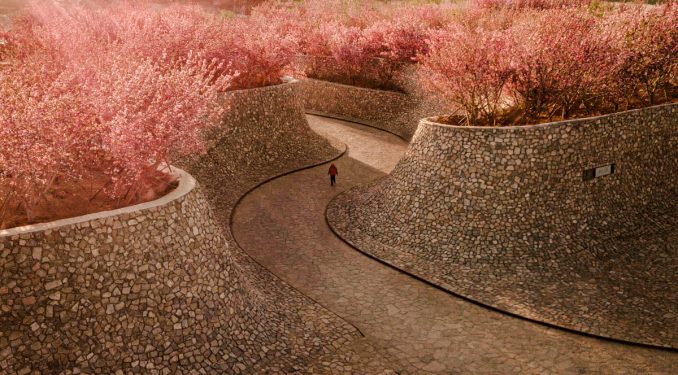
Songmin Liu (刘宋敏) is currently the executive director of Sun Hu Innovation Research Institute of Guangzhou S.P.I Design Co., Ltd., and the chief designer of Sun Hu Studio. He has won the 2020 AHLA Habitat Landscape Award • Outstanding Designer of the Year.
With a solid professional background and rich experience in landscape design, he is good at refining traditional garden humanistic elements and integrating modern spiritual values and endows landscape design with new ideas. He advocates restraint in what is purely natural. Find the prototype from nature, listen to the story of the site, understand the language of the site, and present the appearance of the site itself. The “New Shanshui Design Concept” he practiced is based on the creative transformation of nature, fully understanding nature and the site, and then telling the story of the site in the language of landscape.
How do you start the design process?
The biggest difference between landscape design and interior design/architectural design lies in the integration of materials. Using the materials masterly could bring life and vitality to the space and release the energy of settling the mind. The landscape could recall a feeling of returning to nature for me. There are two aspects of this feeling, one is the use of civil materials and living materials. The other is to create a sense of experience, linking with space, and talking with living materials. There is communication between people and the landscape, between the landscape and others.
What is your approach to landscape design?
I have always maintained a certain restraint with the purely natural approach. Design with nature is not just copying and transporting but creating a transformation. We could always find archetypes in nature. To make the venue becomes what it is supposed to be and listen to the stories the venue tells. To understand it, and to help it presently, the simplest understanding is to achieve it.

New Shanshui is not a landscape on the cultural level but also represents the natural landscape. My understanding of landscapes should be a deeper reflection of emotional belonging. As a landscape architect, I should integrate into the natural environment and draw inspiration from it. Taking the transformation of nature as the core provides living space with artistic appeal for human activities. As Lawrence Halprin said, “In any given background environment, natural, cultural and aesthetic elements have historical inevitability, and designers must fully understand them before deciding what should happen in this environment based on them.”

What is the most rewarding part of being a landscape architect?
As landscape architects, we urgently need to build a healthy environment for the survival and development of more species through artistic strategies under a larger natural framework. It is our responsibility and obligation to make nature a better place.

For example, in the Rizhao Bailuwan Cherry Blossom Courtyard, what relationship should we define between landscape and the earth? I think it’s like “a nail pierces the earth”. Building roads in the city has to split the mountains. In the Rizhao Bailuwan, we are facing a natural ground with a big steep slope, bare rock, and loess. The first step is debridement, irreversible urban expansion splits the mountains to the site. Part of the mountain will be cleared. The second step was to plant a flower forest on the site. Then, we smooth the land, so that the bottom of the valley, the cliff, and the top of the mountain gradually extend to the sky. In the end, the mountains can be shown at the entrance, maintaining the connection between humans and nature.
